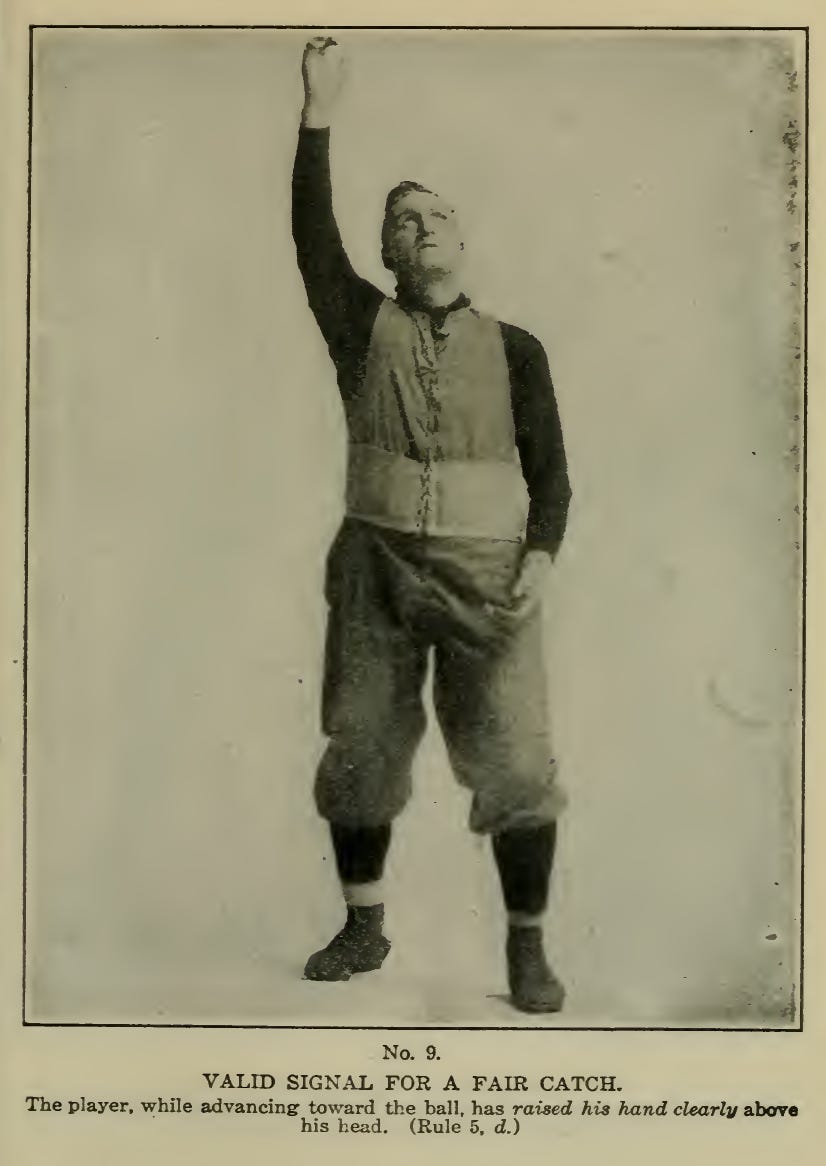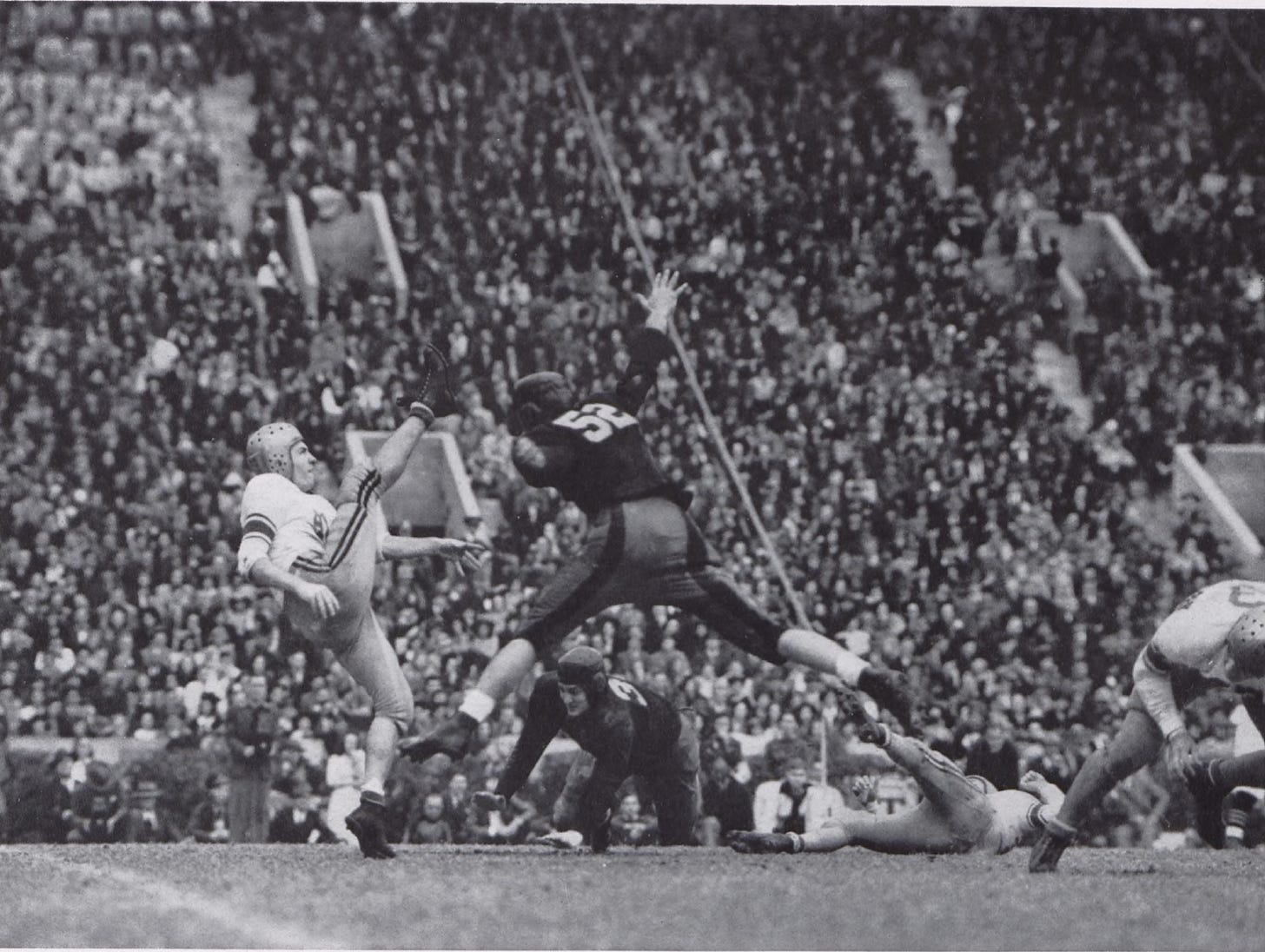Today's Tidbit... Puntin' In The U.S.A.
Let's get boring now,
Everybody's learnin' how,
Come watch a dull punt play with me.
The punt is among the most boring plays in American football, while it is among the most exciting in Canadian football. The difference is that American football is structured so the return team often does not return punts, while the Canadian game forces them to do so. The difference comes down to four rules.
Two key rule differences are that Canadian punt returners cannot fair catch the ball and are protected by a five-yard halo until they touch the ball. The halo keeps the gunners of the world at bay and gives returners some wiggle room to evade potential tacklers. American rulemakers took a long look at implementing that combination of rules for the 1910 season, with the 1909 exhibition game in the Bronx between the Hamilton Tigers and the Ottawa Rough Riders showcasing those rules. No less than Walter Camp advocated for importing the Canadian rules before and after the exhibition game, but he could not get the rules committee to make that change.
Although the no fair catch and halo standards Up North encourage teams to return punts, they do not penalize teams for not doing so. That is left to two other rules. One is the rouge, which, in the case of punts, awards the punting team one point if the ball stops in or exits the end zone. The rouge means return teams seldom let the punted ball roll dead in the end zone. To my knowledge, American football never seriously looked at adding the rouge, but perhaps it happened somewhere along the line.
While the presence of the rouge only makes a difference when the punt can potentially cross the goal line, a fourth rule difference impacts punts everywhere on the playing field. Canadian football allows the onside kick from scrimmage (aka the onside punt), which entered football in the 1890s when Penn coach George Woodruff created his guards back formation. Depending on the year, the rules allowed some or all members of the punting team to recover and advance the punted ball after it crossed the line of scrimmage. The rule-makers eliminated the onside punt from the American game before the 1923 season despite periodic calls to bring it back. The NFL looked at doing so in 1934 and the NCAA a year later, but neither moved ahead.
The onside punt discouraged return teams from letting the punted ball roll to a stop because the punted ball remained live, and players on the punting team behind the punter when he kicked the ball -and were, therefore, "on side"- could recover and advance the ball. The onside kick remains part of Canadian football, with some punting teams scoring on the play. As seen below, an American player returning punts for Toronto forgot the rule and allowed a Hamilton player to recover the punt and run untouched into the end zone.
So, the next time you become bored watching a punt being fair caught, rolling dead, or going into the end zone for a touchback, remember that it does not have to be that way. The punt can be an exciting and relatively safe play, and if you want some advice on how to make it so, just ask your neighbor to the north.
Football Archaeology is reader-supported. Click here to buy one of my books or otherwise support the site.



